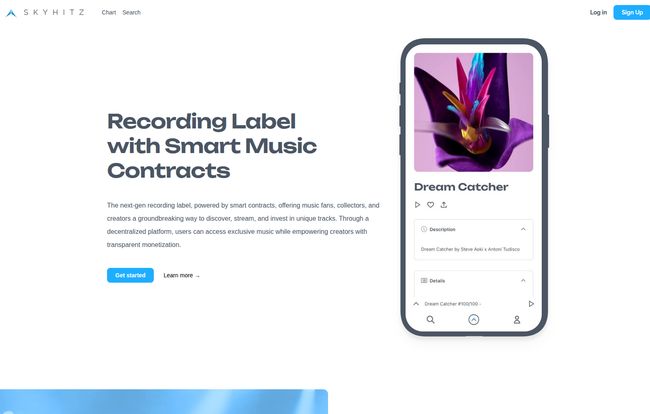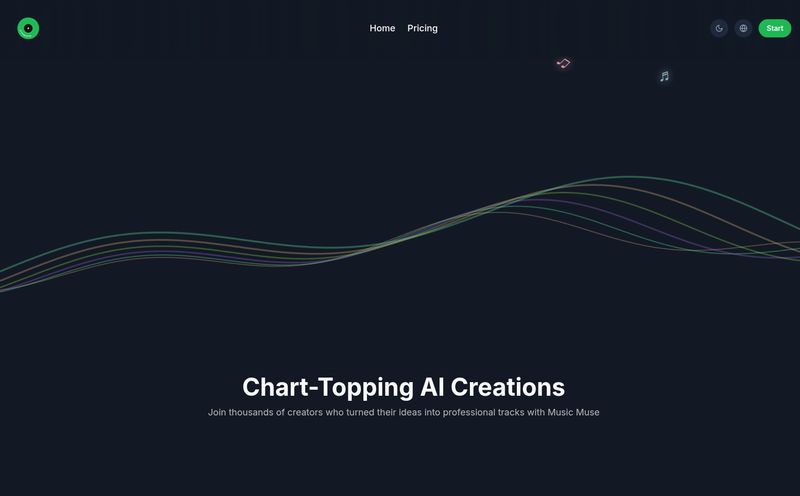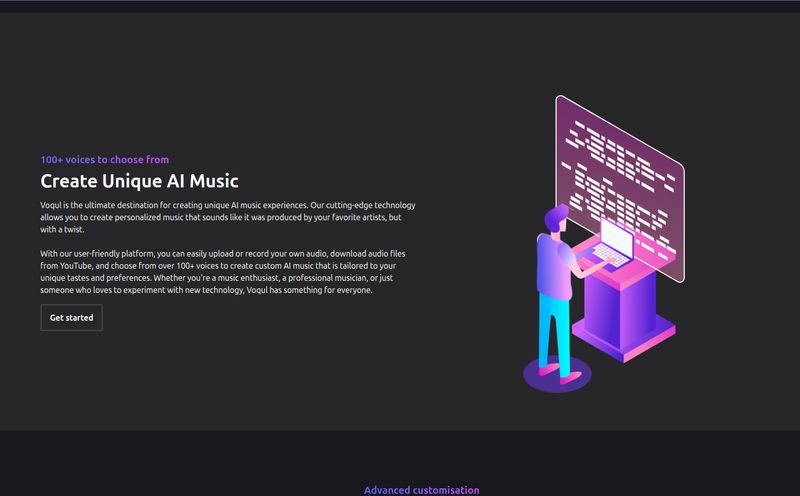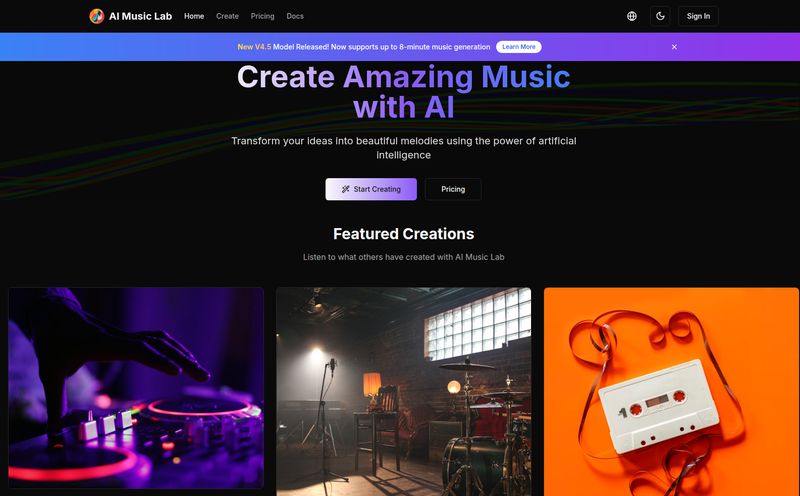If you're a musician, you know the soul-crushing feeling of checking your streaming royalties. You pour your heart into a track, spend countless hours producing it, and get... what? A few fractions of a cent per stream. It's a system that feels broken, a running joke in the industry that’s not particularly funny. For years, we’ve been talking about a better way, a model that actually benefits the creators who are the lifeblood of the whole system. And for fans? We're often just passive consumers, disconnected from the artists we love beyond a follow button.
Well, every now and then, a new platform pops up that tries to flip the script. Enter Skyhitz. It’s a name I’ve seen bubbling up in conversations about Web3 and the creator economy. They call themselves a "next-gen recording label," which is a bold claim. But what caught my eye is their promise to use smart contracts and music NFTs to create a direct line between an artist’s work and their wallet. Is this the revolution we've been waiting for, or just another tech-bro fever dream? I decided to take a look.
So, What Exactly Is Skyhitz?
Okay, let's break it down without the usual blockchain jargon that makes everyone’s eyes glaze over. Think of Skyhitz as a record label and a music streaming platform rolled into one, but instead of being run by executives in a boardroom, it’s powered by code on the blockchain. Specifically, it’s built on the Stellar network, using their new Soroban smart contracts.
Why does that matter? Well, for starters, Stellar is known for being fast and having ridiculously low transaction fees. We’re talking fractions of a penny. This is a big deal when you're dealing with potentially thousands of small transactions. At its core, Skyhitz lets artists turn their songs into Music NFTs (MFTs). Fans can then buy, collect, and trade these NFTs. It’s like owning a limited-edition vinyl record, but for the digital age. But it's more than just a collectible; it's a piece of a smart contract that can be programmed to do some pretty cool things, like share revenue.
How Skyhitz Changes the Game for Artists and Fans
This is where things get interesting. The whole platform is built on redefining that old, tired relationship between artist and listener.
For Artists: Taking Back Control
I've always felt that the biggest tragedy of the digital music era is the loss of control for artists. You hand your music over to a distributor, it gets thrown onto a dozen platforms, and the money trickles back through so many middlemen that there’s barely anything left. Skyhitz aims to cut them out. When an artist mints a track as an NFT on the platform, they set the terms. They get paid directly when a fan buys their MFT. But the real magic is the potential for recurring revenue. The smart contracts can be set up so the artist gets a cut every time that NFT is resold. It’s a transparent, direct-to-artist model that feels, frankly, like how it should have been all along.
For Fans: More Than Just a Listener
For music lovers, this is a shift from being a passive consumer to an active participant. Owning a Skyhitz MFT isn't just about saying "I like this song." It’s about investing in it. You own a verifiable piece of that artist's work. The platform even features an interactive chart where the popularity of a track isn’t just about streams, but about user engagement like buying, liking, and sharing. Your support has a visible, tangible impact. It creates a community where fans are patrons, collectors, and promoters, all at once. Suddenly, you have a real stake in the artist's success. It’s a powerful idea.

Visit Skyhitz
Getting Started with Skyhitz (It's Easier Than You Think)
Now, I know what you’re thinking. “NFTs? Blockchain? I need a computer science degree for that, right?” Wrong. This was probably the most surprising part for me. To get started on Skyhitz, all you need is an email address. That's it. They handle the creation of your music wallet in the background, making the onboarding process incredibly smooth. You can start browsing, streaming and exploring the music NFT collections without having to first figure out Metamask or buy some obscure crypto on a separate exchange. This low barrier to entry is, in my opinion, one of their smartest moves. It acknowledges that for this to go mainstream, it has to be accessible to everyone, not just the crypto-savvy crowd.
The Good, The Bad, and The Blockchain
No platform is perfect, especially one this new and ambitious. Let's weigh the promise against the reality.
The Upside of This New Model
The potential here is enormous. The direct artist-fan connection is a huge win. The transparency of the blockchain means artists can see exactly where their money is coming from. And for fans, the ability to truly own a piece of digital music and support creators directly is a game-changer. Using Stellar keeps costs down, which removes a major pain point of other blockchain ecosystems (I'm looking at you, Ethereum gas fees). It feels like a system designed by people who actually understand the frustrations of both musicians and dedicated fans.
The Hurdles to Overcome
Let's be real, though. Skyhitz is swimming against a strong current. First, it’s a new platform. Building a deep and diverse music catalog takes time, and its success will ultimately depend on the quality of music that artists bring to it. Second, it has to overcome the general public's skepticism—and sometimes outright hostility—towards NFTs. There's a significant educational hurdle to clear.
And then there are the technical risks. I was reminded of this when reading about Grimes' tech-plagued set at Coachella. When you're dealing with cutting-edge tech in a live or high-stakes environment, things can go wrong. While Skyhitz itself isn’t a live performance tool, it relies on a complex stack of new technology. A smooth user experience is critical, and any hiccups could scare away less-patient users. It's a massive challenge, and they have to get it right.
Let's Talk Money: Skyhitz Pricing
So how much does this cost? Well, there's no subscription fee or anything like that. Joining the platform, setting up your wallet, and browsing the music is free. The costs come in when you decide to actually buy a music NFT. The price for each MFT is set by the artist, so it can vary wildly. The good news is that because it’s on Stellar, the network fees for the actual transaction are negligible. This is a huge advantage, making it feasible to buy and trade even lower-priced pieces of music without getting eaten alive by fees.
Frequently Asked Questions About Skyhitz
I've seen a few questions pop up, so let's tackle them head-on.
Do I need to be a crypto expert to use Skyhitz?
Absolutely not. That’s kind of their whole thing. If you have an email address and can click a button, you can get started. They've abstracted away most of the complex crypto stuff to make it user-friendly.
How do artists actually make money on Skyhitz?
Artists earn money in two primary ways: from the initial sale of their music NFT and from receiving a percentage of all future sales of that NFT on the secondary market, thanks to the magic of smart contracts.
What is a Music NFT, really?
Think of it as a digital certificate of ownership for a song, or even just a piece of a song. It's stored on a public ledger (the blockchain), so everyone can see who owns it. It's unique and can't be copied, making it a true digital collectible.
Can I just listen to music without buying anything?
Yes! According to their site, you can simply tune in and stream music on the platform. This is smart, as it lets people discover new artists first before deciding to invest in their work.
What makes the Stellar network a good choice for this?
Speed and cost. Stellar is designed for fast, low-cost payments. This makes it ideal for a platform that could handle a high volume of transactions, like buying and selling music NFTs, without the crippling gas fees you see on other networks.
Final Thoughts: Is Skyhitz Worth the Hype?
So, where do I land on Skyhitz? I’m cautiously optimistic. I love the mission. The music industry is long overdue for a shakedown, and a model that puts power back in the hands of creators and dedicated fans is the right direction. The platform is well-designed, and the decision to build on Stellar and make the user onboarding simple is incredibly smart.
But it's still early days. Its future hinges on its ability to attract amazing artists and build a vibrant community. It needs to prove that the tech is reliable and that the model is sustainable. Will it replace Spotify? Probably not anytime soon. But for the independent artist looking for a real alternative and for the true music fan wanting a deeper connection, Skyhitz is one of the most exciting projects I've seen in a long time. It’s not just a platform; it's a statement. And it’s one I’ll be watching very, very closely.
Reference and Sources
- Official Website: Skyhitz.io
- More on Stellar's Soroban Smart Contracts: Stellar.org/soroban



